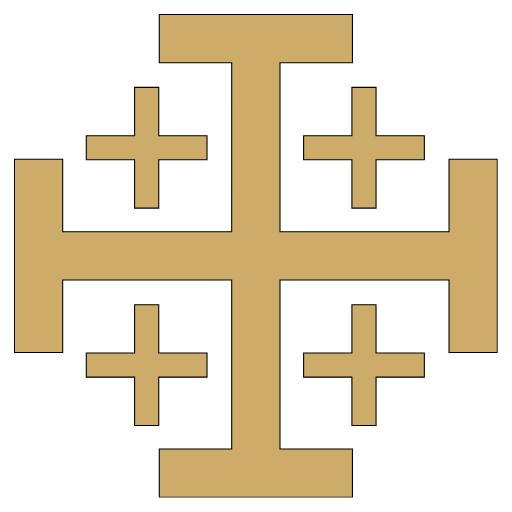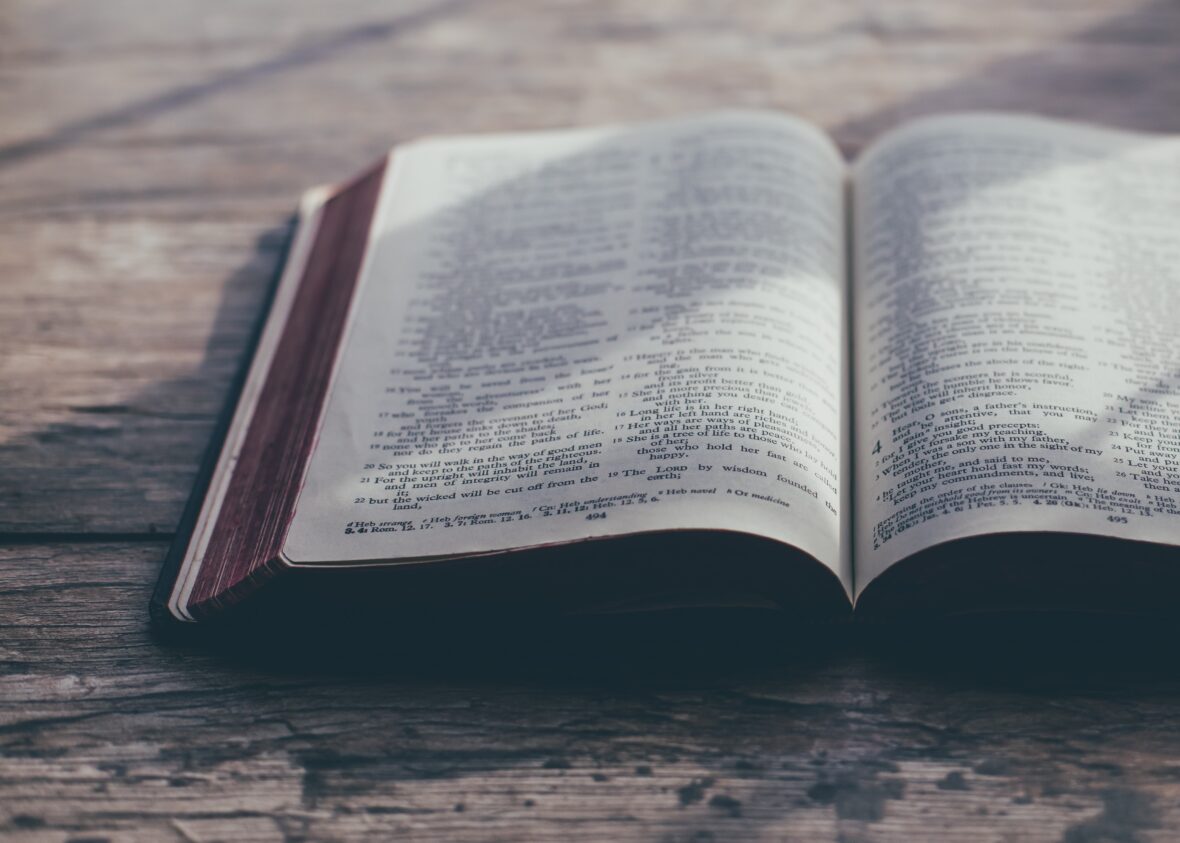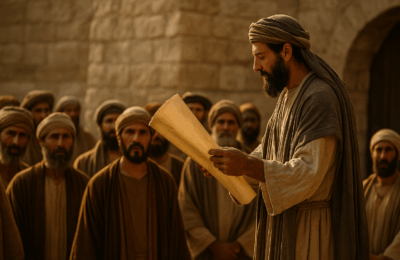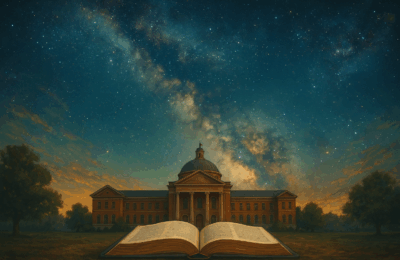Home | Bible Resources | Historical Books
2 Chronicles: A Call to Covenant Renewal and Kingdom Hope
Introduction
2 Chronicles is the final volume of the Chronicler’s sweeping theological history, written not merely to recount the past, but to restore covenantal identity and rekindle future hope in post-exilic Israel. Picking up from Solomon’s reign and continuing through the tragic fall of Jerusalem, the book fixates on the Davidic line, the centrality of the temple, and the urgent call to return to God. This is not just history—it’s an altar call for a remnant people, reminding them that while kings fall and kingdoms crumble, the promises of God endure. In a time of rebuilding, 2 Chronicles calls God’s people to remember who they are, who He is, and how He still moves through faithful hearts.
1. Title, Author, and Date
Title: “Chronicles” comes from the Greek Paraleipomena (“the things left out”), though this is misleading, as the book is a theological retelling rather than merely supplemental. The Hebrew title Divrei Hayyamim means “The Words (or Events) of the Days,” emphasizing its historical review.
Author and Date: Though anonymous, Jewish tradition attributes authorship to Ezra, based on linguistic parallels with the book of Ezra. It was likely written between 450–425 BC, after the return from Babylonian exile. The Chronicler writes to a post-exilic audience seeking to rediscover their identity in God’s covenant.
Historical Setting: 2 Chronicles covers the period from Solomon’s reign (970 BC) to the Babylonian exile (586 BC), with a final glimpse of restoration under Cyrus’s decree (538 BC).
Role in Redemptive History: This book emphasizes covenantal continuity through the Davidic line and temple worship, preparing the stage for Messianic expectation amid the devastation of exile.
Book Stats Sidebar:
Chapters: 36
Verses: 822
Approx. Word Count (LSB): ~32,000
2. Purpose and Themes
Central Theological Purpose: To call post-exilic Israel to covenantal faithfulness, by retelling Judah’s royal history with a priestly and Davidic focus, pointing toward temple worship, repentance, and the enduring hope of restoration through God’s promises.
Major Doctrines Emphasized:
- Davidic Covenant and royal messianism
- Centrality of temple worship and priestly mediation
- Sovereignty and faithfulness of God despite national collapse
- Revival and repentance (e.g., Hezekiah and Josiah)
Literary Features:
- Repetition and reinforcement of priestly and temple themes
- Theological filtering of kings (ignores northern kings entirely)
- Sermonic structure, with speeches, prayers, and reforms emphasized
- Ends with a hopeful edict (Cyrus’s decree) as a literary climax
3. Outline
The book divides into two main parts: Solomon’s reign (chs. 1–9), emphasizing the glory of the temple; and the kings of Judah (chs. 10–36), highlighting revival, rebellion, and ultimate exile—yet ending in hope.
I. The Reign of Solomon: Glory and Temple (2 Chron. 1–9)
A. Solomon’s Wisdom and Wealth (1:1–17)
B. Preparation for Temple Construction (2:1–18)
C. Building and Dedication of the Temple (3:1–7:22)
- Temple Construction and Furnishings
- Solomon’s Dedication Prayer
- The Glory of the LORD Fills the TempleD. Solomon’s Later Reign and Achievements (8:1–9:31)
II. The Kings of Judah: Decline, Reform, and Exile (2 Chron. 10–36)
A. Rehoboam to Asa: Early Division and Reforms (10:1–16:14)
B. Jehoshaphat to Joash: Faithfulness and Failure (17:1–24:27)
C. Amaziah to Ahaz: Apostasy Increases (25:1–28:27)
D. Hezekiah and Josiah: Spiritual Revival (29:1–35:27)
- Hezekiah’s Reforms and Passover Revival
- Josiah’s Rediscovery of the Law and National RepentanceE. The Final Collapse: Exile and Hope (36:1–23)
- Babylonian Destruction of Jerusalem
- Cyrus’s Edict to Return
Canonical Flow: 2 Chronicles serves as a spiritual capstone to Israel’s royal and temple history, pointing forward to post-exilic rebuilding and Messianic anticipation. It transitions naturally into Ezra–Nehemiah.
4. Key Themes and Theological Contributions
Covenant and Kingship: The Chronicler filters Israel’s history through the lens of the Davidic covenant, reinforcing that God’s promises still stand despite human failure.
Temple and Worship: 2 Chronicles centers around the Jerusalem temple as the heart of national identity, priestly mediation, and God’s manifest presence.
Revival and Reform: Hezekiah and Josiah model godly leadership, demonstrating the power of repentance and the enduring relevance of God’s Word.
God’s Sovereignty and Mercy: Even in judgment, God preserves a remnant, showcasing His covenantal mercy and foreshadowing future restoration through Christ.
📌 Memory Verse: 2 Chronicles 7:14 (LSB) — “And My people who are called by My name humble themselves and pray and seek My face and turn from their evil ways, then I will hear from heaven, will forgive their sin, and will heal their land.”
⚔️ Major Rebellions or Turning Points:
1. The Kingdom Divides (2 Chron. 10)
Rehoboam’s pride leads to national rupture, dividing the kingdom and abandoning God’s ideal of covenant unity.
2. The Fall of Jerusalem (2 Chron. 36:15–21)
Despite repeated warnings, Judah’s persistent idolatry results in divine judgment—temple destroyed, people exiled.
3. The Rediscovery of the Law (2 Chron. 34)
Josiah’s revival highlights the power of Scripture to bring national repentance and restoration—even temporarily.
5. Christ in 2 Chronicles
2 Chronicles anticipates Christ as:
- The Greater Solomon, whose temple (John 2:19–21) and wisdom surpass the earthly king (Matt. 12:42)
- The Davidic King, whose throne is eternal (2 Sam. 7; fulfilled in Luke 1:32–33)
- The True Temple, where God dwells among His people (John 1:14; Heb. 9–10)
- The Final Reformer, who brings true revival and the New Covenant (Heb. 8; Jer. 31)
Typology & Fulfillment Chart (Recommended Visual):
| 2 Chronicles Type | Christological Fulfillment |
|---|---|
| Solomon’s Temple | Christ as the ultimate dwelling place of God (John 1:14) |
| Davidic Throne | Jesus as eternal King (Luke 1:32–33; Rev. 19:16) |
| Hezekiah’s Intercession | Christ as High Priest and Advocate (Heb. 7:25) |
| Josiah’s Reforms | Christ’s cleansing of the temple (John 2:13–17) |
6. Historical and Literary Notes
Genre and Structure: Historical-theological narrative with a priestly and liturgical lens. While selective in content, it prioritizes covenantal instruction over exhaustive chronology.
ANE Parallels: The Chronicler’s emphasis on temple building echoes similar royal building projects across the ancient Near East—but uniquely anchors Yahweh’s presence and law at the center.
Theological Contributions:
- Emphasis on corporate responsibility and spiritual leadership
- Reinforces Scripture-based reform as essential for renewal
- Provides a hopeful conclusion even after judgment
👤 Key Characters:
- Solomon – Builder of the temple and prototype of wisdom
- Rehoboam – Divided the kingdom through pride
- Hezekiah – Godly king who restored temple worship
- Manasseh – Wicked king who repented late in life
- Josiah – Righteous reformer who rediscovered the Law
- Cyrus – Persian king who allowed the Jews to return
7. Applications for Today
Discipleship Formation: 2 Chronicles teaches that true revival begins with God’s Word and requires humble, wholehearted repentance. Believers are called to worship God rightly and lead with integrity.
Worldview and Ethics: The book reminds us that national blessing is linked to covenant obedience—not cultural power. It shapes a worldview where spiritual fidelity outweighs political strength.
Leadership and Mission: Like Hezekiah and Josiah, faithful leaders must stand against idolatry, pursue biblical reform, and inspire collective repentance—even when culture crumbles.
8. Shoe Leather Discipleship Tie-In
This book shows us that revival is possible—even in the ashes of rebellion. Through the lives of faithful kings and the hope of restoration, 2 Chronicles invites us to walk in covenant loyalty, seeking the Lord with undivided hearts. It calls every generation to return to the Word, repair the altar, and reignite their devotion—not by might, but by faith in the God who never forgets His promises. In Christ, our greater King, the temple is rebuilt—not with stones, but with living hearts made new.







